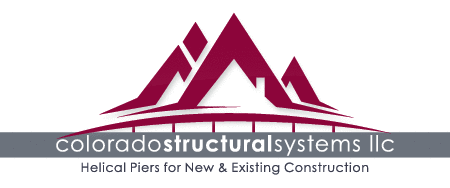Helical Piers for New Home Construction
Helical Piers for New Construction
Building new structures on unstable soil types will result in foundation settling. Using Helical Piers while in the construction process will minimize or, in some cases, prevent foundation cracks and structural damage.
The foundation of any building performs a crucial role in supporting the structure above it. If you are building a new home or business, you want your structure to last for decades. Protect your investment by employing the expertise of Colorado Structural Systems, the premier foundation support contractor in southern Colorado. Our experience in construction has given us the knowledge and skills to perform the area’s best foundation support.
We are accredited by the developer of the helical pier system to install this groundbreaking technology, the A.B. Chance Company. Helical pier systems have been proven to be the most effective means of repairing damaged foundation walls. Trust the foundation repair experts at Colorado Structural to save your valuable building before damaged footings cause irreparable harm.
If you are building a new home in the Colorado Springs or Denver areas, it is important to install helical piers under your new construction footings. The soil in these and the surrounding area is expansive which means that it will shrink or heave depending on weather conditions. If you don’t utilize this solution with new construction, the shifting soil beneath your foundation could cause the foundation to shift and/or move and eventually cause foundation failure.
Installing helical piers under your new construction will prevent foundation problems from the start. This is highly recommended by engineers all across the United States. Helical piers are installed below the expansive soils so that the structure is anchored into stable soils and sitting on a solid bedrock. These new construction helical piers can be installed in any weather condition and are installed quickly so there is little disruption to the timing of the new construction project.

